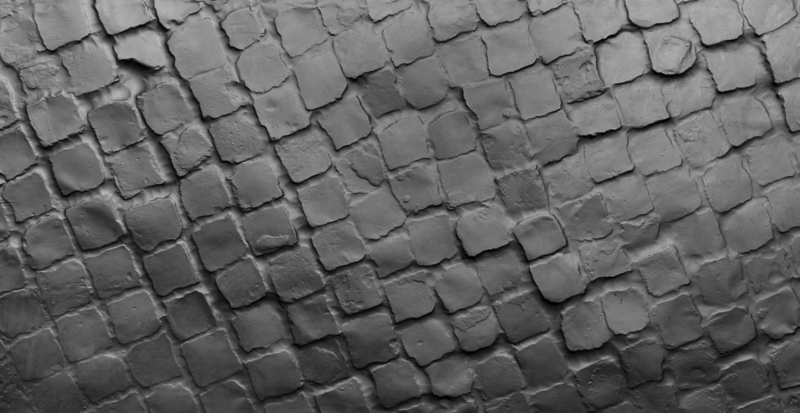Baldo Diodato, a Neapolitan artist living and working in Rome, debuted his art career in the 1960s where he studied at art academies in Turin and Naples and formed a group called ‘Operativo Sud 64’ with other Italian artists from Naples. But before residing in Rome, he lived in New York and produced art there for 25 years of his career, from 1966-1992, which was obviously an exciting time for artists to be in New York (hello Andy Warhol, Roy Lichtenstein, and Claes Oldenburg.) In New York, he experimented with the fast-paced life in the US and wanted to contrast that aspect with the slower-paced life of that in Italy.

On Thursday September 21, 2017 at MAC Maja Arte Contemporanea, a contemporary art gallery located in the center of Rome near Campo de’ Fiori, held the opening night for Diodato’s solo exhibition entitled “Pedibus Calcantibus’ which focused on his work with Sanpietrini (also ‘sampietrini’), which literally means ‘little Saint Peters.’ Sanpietrini is the traditionally black cobblestone roads in Rome, and other parts in Italy, that are impossible to miss and are immediately recognizable in the layout of the city. They are made up of black basalt that was trimmed from large Roman stones and was used as pavement to make it easier for carriages to get around. Because they are durable, they do not need to be replaced often, which makes it very economically friendly for cities.

The basis of this exhibition is to bring his viewers down the streets of Rome with him, almost literally, by showing the stones used on most of Rome’s streets, and once you take a look at his work, you instantly think of Rome. ‘Pedibus calcantibus’ means to be on foot with your own feet touching the ground. Between 2001 and 2017, Diodato’s intention was to freeze a moment in time by using a footstep on the grounds that have been in ever-changing Rome for the past 2,000 years.

To create this, the artist placed aluminum sheets on the ground and had pedestrians walk on them. He then used a hammer to finish them. Sanpietrini is symbolic of Rome, the eternal city, and these works reveal the stepping stones and history of what was a large Empire for Western civilization. Diodato wanted to capture footprints left by people who have walked these ancient grounds, but include current Romans and travelers. The ancient stone provides a contrast to the footprints left by present Italians, and that moment is frozen onto the aluminum sheet that replicates the stones. This technique provides a discourse about the calmer, slower-paced Italian lifestyle of walking around. Preach!

We saw this exhibition in person and what we found most intriguing was the lighting against the metallic pieces. The light accentuated the flatness of the matte black and white pieces. Seeing feet placed on the works as if you are there with this person taking a step too provides a great narrative throughout the space to reinforce Diodato’s mission behind these works. Art critics, local gallerists, locals themselves, and friends attended the opening and naturally, no one understood our bad Italian. With the bright atmosphere comprised of white walls and low ceilings, Diodato’s bright, flashy works stand out so beautifully in this space and it is one exhibition to not miss in Rome.

MAC Maja Arte Contemporanea is open Tuesday-Thursday 3-8pm and Saturday 11am-7:30pm.
Photos // Courtesy of the MAC Maja Arte Contemporanea
top photo // Red Star Piazza Montecitorio, Rome, 2001



